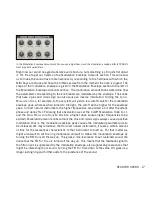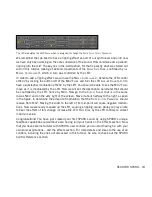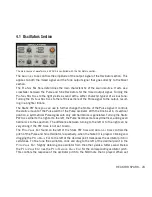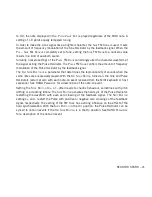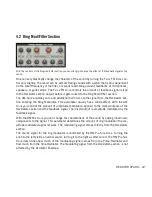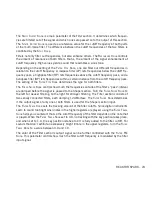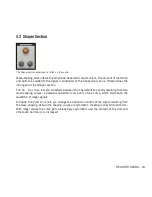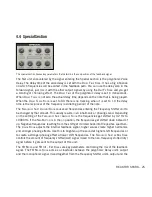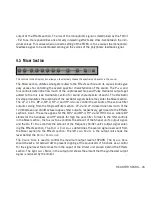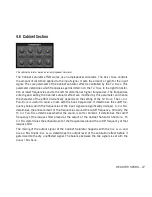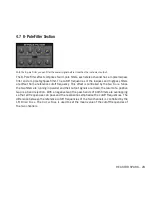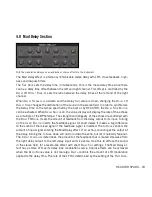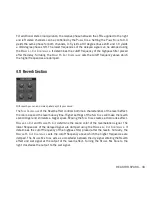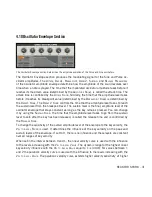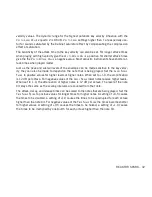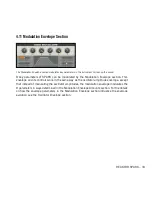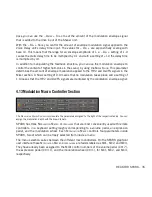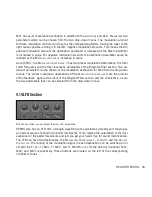
REAKTOR SPARK – 21
to 0.0, the note displayed in the
p
itch
V
alue
e
Dit
is played regardless of the MIDI note. A
setting of 1.0 yields equally tempered tuning.
In order to make the sinus signal have a brighter character, the
S
ine
FM K
nob
is used. It sets
the amount of frequency modulation of the Sine Oscillator by the feedback signal. When the
p
lS
– S
ine
M
ix
K
nob
is completely set to Sine, setting the
S
ine
FM K
nob
to a nonzero value
results in a kind of sawtooth sound.
Similarly, nonzero settings of the
p
ulSe
FM K
nob
can strongly alter the character waveform of
the signal exiting the Pulse Oscillator. The
p
ulSe
FM K
nob
controls the amount of frequency
modulation of the Pulse Oscillator by the feedback signal.
The
K
ey
S
ync
b
utton
is a parameter that determines the reproducabilty of sounds when the
same notes are successively played. With the
K
ey
S
ync
b
utton
turned on, the Sine and Pulse
Oscillators restart at zero with each note-on event received from the MIDI keyboard or host
sequencer. See
ranD p
araMeter
for a description of the note-on event.
Setting the
S
ync
b
utton
to
+
or
–
often leads to chaotic behaviour, sometimes with pitch
drifting or a crackling timbre. The
S
ync
b
utton
activates the hard sync of the Pulse Oscillator,
restarting the waveform with each zero crossing of the feedback signal. The
S
ync
b
utton
settings
+
and
-
restart the Pulse with positive or negative zero crossings of the feedback
signal, respectively. The setting of the
pW K
nob
has a strong influence on the effect of the
hard synchronization. With the
S
ync
b
utton
in the
o
FF
position, the Pulse Oscillator can be
synced to note-on events if the
K
ey
S
ync
b
utton
is in the
o
n
position. See
ranD p
araMeter
for a description of the note-on event.
Summary of Contents for Reaktor Spark
Page 1: ...MANUAL...











